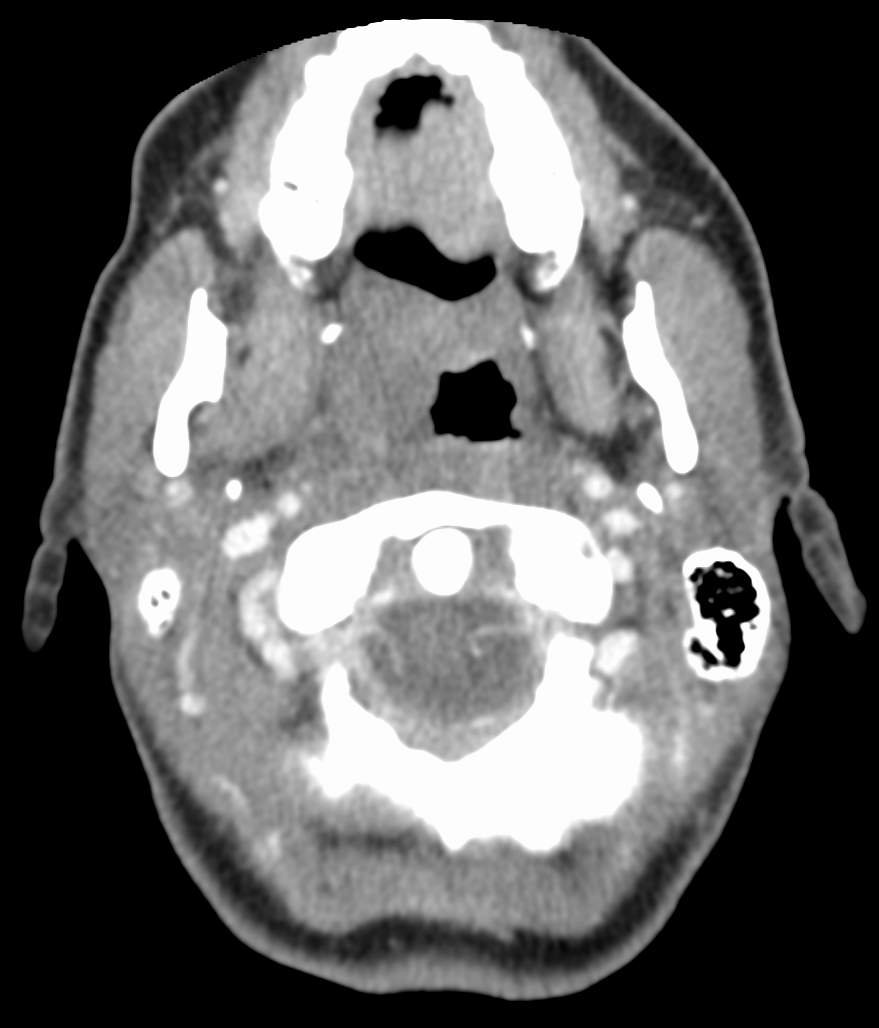Peritonsillar abscess CT scan
|
Peritonsillar abscess Microchapters |
|
Diagnosis |
|
Treatment |
|
Case Studies |
|
Peritonsillar abscess CT scan On the Web |
|
American Roentgen Ray Society Images of Peritonsillar abscess CT scan |
|
Risk calculators and risk factors for Peritonsillar abscess CT scan |
Editor-In-Chief: C. Michael Gibson, M.S., M.D. [1] Associate Editor(s)-in-Chief: Prince Tano Djan, BSc, MBChB [2]
Overview
CT scan
Imaging is helpful in differentiating peritonsillar abscess from peritonsillar cellulitis as well as a guide during abscess drainage.[1][2][3][4][5]
Coronal contrast-enhanced CT scan of the neck may identify the peritonsillar abscess.[2]
The image above shows a CT scan of right-sided peritonsillar abscess[6]
References
- ↑ Costantino TG, Satz WA, Dehnkamp W, Goett H (2012). "Randomized trial comparing intraoral ultrasound to landmark-based needle aspiration in patients with suspected peritonsillar abscess". Acad Emerg Med. 19 (6): 626–31. doi:10.1111/j.1553-2712.2012.01380.x. PMID 22687177.
- ↑ 2.0 2.1 Bandarkar AN, Adeyiga AO, Fordham MT, Preciado D, Reilly BK (2016). "Tonsil ultrasound: technical approach and spectrum of pediatric peritonsillar infections". Pediatr Radiol. 46 (7): 1059–67. doi:10.1007/s00247-015-3505-7. PMID 26637999.
- ↑ Buckley AR, Moss EH, Blokmanis A (1994). "Diagnosis of peritonsillar abscess: value of intraoral sonography". AJR Am J Roentgenol. 162 (4): 961–4. doi:10.2214/ajr.162.4.8141026. PMID 8141026.
- ↑ Strong EB, Woodward PJ, Johnson LP (1995). "Intraoral ultrasound evaluation of peritonsillar abscess". Laryngoscope. 105 (8 Pt 1): 779–82. doi:10.1288/00005537-199508000-00002. PMID 7630286.
- ↑ Blaivas M, Theodoro D, Duggal S (2003). "Ultrasound-guided drainage of peritonsillar abscess by the emergency physician". Am J Emerg Med. 21 (2): 155–8. doi:10.1053/ajem.2003.50029. PMID 12671820.
- ↑ Template:Https://commons.wikimedia.org/wiki/File:PeritonsilarAbs.png Peritonsilar abscess Date 2 June 2016 Source Own work Author James Heilman, MD
